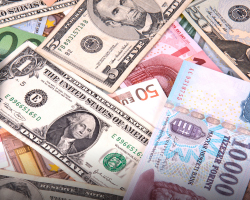Football Trading Strategies For 2021

Football is a lot more than just a fun game to watch with friends, it is a multi-billion dollar industry that presents a load of promising investing opportunities. You might already know that major teams spend very good money on getting top players. But do you have an idea of how much income the sport generates? Today we explore the most beneficial football trading strategies along with the whole concept of trading football team stocks.
Football Teams on the Stock Exchange
As you think about making money off sports the first thing that comes to mind is betting. And while the idea of placing bets on specific players, game scores, and whatnot has been around for a very long time, it’s not always the best solution due to the variations in regulation and escalated risks. The best football trading strategies focus on the stocks of well-performing football teams instead of particular games or players. Since major football clubs are essentially companies with their own lines of both expenses and income, it makes complete sense for the investors to become a part of the process and actively benefit.
Just so you have a general picture of how much money circulates in the football industry, here are a few stats. Over the last year, a group of top revenue generators within the football industry has collectively accumulated over $10 bln. That’s a 12% increase from 2019 and an all-time record. It’s worth mentioning, however, that the majority of the teams who contributed to such an increase might not always be available for stock trading.
But how did all of this start? A UK based football club, Tottenham Hotspur, became a pioneer in placing themselves on the stock market a hundred years after they were founded, in 1983. Many other teams have quickly decided to follow in Tottenham’s steps, and by 1991 the first football team stock market index came into existence—Stoxx Europe Football (FCTP). FCTP is perhaps the best instrument for trading public football teams as it includes the majority of top performers. And this is clearly indicated in the numbers: as of mid-2020, FCTP’s free-float adjusted market cap was just over $800 mln. Now, let’s take a closer look at the Stoxx Europe Football index, discovering what teams it comprises, how it performed over the years, and what are the major factors that affect the index success.
The Stoxx Europe Football Index
When selecting the most suitable football trading strategy, you need to start by closely examining the instrument. The Stoxx Europe Football currently includes twenty-two high-performing teams from Europe and Turkey. The teams that contribute to the index are:
- Aalborg Boldspilklub (Denmark)
- AFC Ajax (Netherlands)
- AGF (Denmark)
- AIK Football (Sweden)
- AS Roma (Italy)
- Besiktas (Turkey)
- Borussia Dortmund (Germany)
- Brondby IF (Denmark)
- Celtic (Scotland)
- Fenerbahce (Turkey)
- Futebol Clube do Porto (Portugal)
- Galatasaray (Turkey)
- Juventus (Italy)
- Lazio (Italy)
- Olympique Lyonnais (France)
- Parken S&E [F.C. Copenhagen] (Denmark)
- Ruch Chorzow (Poland)
- Silkeborg (Denmark)
- Sport Lisboa E Benfica (Portugal)
- Sporting (Portugal)
- Teteks AD-FK Teteks (Macedonia)
- Trabzonspor (Turkey)
You might have noticed that the previously mentioned stock market pioneer Tottenham Hotspur, as well as one of the most recognized English teams—Manchester United, are not on the above list. That’s because both teams are listed separately: Tottenham on the London Stock Exchange as TTNM and Manchester on NY Stock Exchange as MANU.
And how about Manchester's number one rival—Liverpool? Despite the fan’s desperate desire to profit off their favorite team, neither Liverpool F.C. nor its owner the Fenway Sports Group are public, and therefore cannot be traded. There is, however, a confusing LFC symbol at the NYSE that tricks many club devotees into investing in a Chinese insurance company, China Life Insurance Ltd.
Now, let’s circle back to the FCTP and discover all the factors that contribute to developing low risk football trading strategies for the index. As you look at the chart, you’ll notice that the index was peaking shortly after its announcement, in the mid to late-nineties, with a record high of 458 points in January 1997. After the index went down from that impressive mountain top it has remained in a range between 59 and 186 points until today.
At a closer glance, you can see that the index was doing very well just before the 2020s pandemic, reaching the highest point of the previous decade in Feb 2020—133 points and then dropping to 64 by April. The sports industry was just one among many who took a really hard hit from the virus. Along with media, hospitality, travel, and entertainment companies, football clubs have gone through an unprecedented rough patch.
But the pandemic, no matter how large, is still a singular event. While we simply can’t disregard the current effect of the virus on the stock market, there are factors beyond the current situation that have been driving FCTP and other football club indices since the beginning.
Football Trading Strategy Contributing Factors

A successful stock trader will always have a deep insight into their focus industry’s key factors. While from the outside, the income-expense balance seems like just a number, an insider can tell what drove the company’s share price in the particular direction. This way, for example, a tech company can attract massive attention after a successful product release and vice versa. The same applies to the football clubs, and with them the football trading strategies. Here are several factors that have a record of influencing football stock prices.
- Performance. It goes without saying, that the more a team scores, the better it will reflect on the market. Since football clubs don’t technically produce anything, their value is determined by how well the team performs over specific time periods, as well as overall. Don’t worry though, you can benefit from football trading strategies without deep-diving into the sports statistics, as all the info you might need can be easily found online.
- Players. The football team members can affect the share prices on several levels. For starters, each time a club loses or acquires a valuable player, the market is very likely to react. Then the reputation of certain team members can also play a big role. It’s no secret that the best-performing football stars usually take a very noticeable position under the spotlight, take Christiano Ronaldo or David Beckham, for example. So, it makes sense that their private life events and decisions can affect the market, as contributors to the player’s game.
- Championship titles. Scoring is good, but earning various titles is even better. Teams who consecutively win championships are more likely to continue trending upwards in the market. That’s just basic math. This means that choosing a football trading strategy for your trades will also involve understanding the hierarchy of football-related competitions.
- Broadcasting privileges. Alongside merchandise and ticket sales, football clubs’ major income source is the broadcasting rights sold to media companies. Streaming a match is an incredibly profitable deal for TV networks and online services, due to all the advertising potential that comes along. And for anyone who’s implementing football trading strategies, such agreements are one of the factors to consider when making a decision.
- Management. Finally, the club’s trainer plays a huge role in the team’s performance and reputation, and with them—the share price. Similar to player transfers, hiring and firing a coach can largely affect the way investors feel. The same goes for the managerial board and the way they handle the team’s finances.
At this point, you’ve had a chance to estimate the potential of finding the best football trading strategy. Next, we are going to get a bit more specific and discuss several instruments associated with trading football, both classic and American.
Manchester United: the Wall Street Football Club
You don’t have to be a football fan to know who Manchester United are. Founded in 1878, the Red Devils are the number one trophy getters in the history of English Football. Their track record of victories and achievements includes twenty League titles, twelve FA Cups, five League Cups, twenty-one FA Community Shields, three UEFA Champions Leagues, one UEFA Europa League, one UEFA Cup Winners' Cup, one UEFA Super Cup, one Intercontinental Cup, and one FIFA Club World Cup. Quite a history, isn’t it?
As far as their stock market journey, MA has a few adventures there as well. Originally listed in 1991 on the London stock exchange, the stock was then taken down due to a shift in ownership. MANU went back up in 2012 on NYSE and reached its historical high in August 2018 after the announcement of notable sponsorship deals. The price has quickly gone back into the usual range as the team wasn’t exactly rocking it on the field. Nonetheless, Manchester United stock is often mentioned in many of the best football trading strategies, which is backed up by their market cap of $2.491 billion.
Now, every team we’ve discussed so far represents the European version of football, also known as soccer. And how about American football: are there any low risk football trading strategies in that segment?
American Football Trading Strategies
While every American football event is largely commercialized, directly investing in the teams through stocks isn’t really an option. The only team that has ever gone public is Wisconsin’s Green Bay Packers. Since their foundation just over a century ago, Packers have presented five public investment opportunities, with the latest one in 2012 when shares went for $250 apiece.
The most recent investment window was the team's way to fund their field’s renovations. From this, it is partially clear that Packers will most likely abstain from any further stock events as much as possible. What’s more, the Green Bay Packer stock officially does not pay dividends, has no earning benefits, isn’t available for trading, and is not protected under securities law. So, we can safely say that investing in Packers is more of a fan appreciation lever than a profit-oriented instrument.
As you can see, there aren't any viable solutions to profiting off American football teams through stocks. But that doesn’t mean there is no way to gather the crops of your favorite players’ success. You might already know that large US companies play huge roles in the development and performance of local sports. For instance, Nike and Pepsi are well-known for sponsoring massive sports events. Therefore, it comes as no surprise that the scores, management shifts, and all other football-related factors can contribute to the price movement of the said stocks.
NKE and PEP are two of the most on-the-nose examples. There is an array of other American companies that can be evaluated from a football trading strategy perspective. Some of these include: Under Armour Inc. (UA), Dick’s Sporting Goods Inc. (DKS), Comcast Corp (CMSA), as well as some somewhat least expected like General Electric Co (GE) and Walt Disney Company (DIS).
DIS in particular is a good buy on many levels, but especially so as one of the best football trading strategies since 80% of ESPN is under Mickey’s ears. ESPN along with Fox, NBC, and CBS pay good dollars each season to broadcast NFL games, which, in turn, always delivers great numbers. That’s why, while investing in media companies might not directly be a football trading strategy, it is still a solid solution to making your favorite sport profitable.
Next, we are going to get back to the football teams that bring their stock investors dividends in a more obvious way and discuss the pros and cons of putting your money into football indices.
Advantages of Investing in Football Teams

Before you dive into any specific football trading strategy, you need to have a clear vision of both the ups and downs of trading in this category. Luckily, in the sports segment, the advantages and disadvantages aren’t really make-or-break factors. They are more of strategic consideration points. Starting with the ones on the brighter side:
- Portfolio diversification. A lot of asset categories correlate with each other, like Gold and USD, for example. And while the gradual distribution of investment eggs over several asset-class baskets is always a good idea, sometimes the balance is not as drastic as one would hope. Sports teams, although still very commercial, fall slightly beyond the range of the typical global economy dance. This means, when the rest of your investments are underperforming, a bet on a team or two might just save the day. With this said, it is still crucial to spread your attention over a variety of instruments to get the best out of trading.
- Solid results. Depending on the stock you went with and on the factors that contribute to its movement, your sport-based investments can perform better than a whole bunch of other instruments on the market. For example, it isn’t surprising that the market will get a good share of volume during a major event such as the Euro Cup or World Cup. This basically means that football indices deserve the same level of attention as any other stock.
- Extra incentive. The best football trading strategy is the one that is based on a deep knowledge of the sport in general and a team, in particular. From that, we can easily conclude that devoted football fans will most likely have a lot more chances of succeeding. Not to mention, owning a share in your favorite team is both a great way to support the players and to receive an extra bit of satisfaction with each new victory in the form of monetary rewards.
Disadvantages of Investing in Football Teams
But there is also a proportional amount of less uplifting factors to mind when choosing the best football trading strategy. Such as:
- Increased volatility. If you are a day trader, volatility is more your friend than foe. However, despite your approach you always have to understand that with great volatility comes great risk. Of course, the rewards are also more substantial when the chart is all over the place. So, the takeaway here is to educate yourself as much as possible to ride the hectic waves of volatility for profit and not for loss.
- Low volume. Compare the enthusiasm of someone who breathes and sleeps football and someone who might watch an occasional match. Pretty much the same ratio can be applied to the portion of football share traders to stock traders overall. Although most football trading strategies are rather effective, a lot of traders are simply not interested in investing their efforts into something they either don’t fully understand or don’t really care about. As a result, the football indices market rarely gets too much attention compared to other assets.
- Power of sentiment. Another reason, while some traders abstain from diving into football trading strategies is that the rest of the participants tend to base their decisions on pure sentiment. Currencies or commodities, for example, get a fair share of technical analysts who build their strategies on math over anything else. But the sport-related markets, on the other hand, are induced by passion, which as you might have guessed, is more challenging to predict or calculate, unless you are a true fan, of course.
Investing in Football Stock in 2021: An Opportunity?
Based on what we’ve just learned, is it a good idea to implement a football trading strategy in 2021? In general, yes. Although the sports industry is not living through its best times right now, things are slowly but surely getting accustomed to the new normal. It will be a while until we gather dozens of thousands of football fans in one stadium again, but the interest in the sport is still very much there, telling us that football will most likely last as long as humanity itself. Logically, there are more than enough reasons to choose a financial instrument to effectively benefit from football. Especially, if the instrument is universal enough to present opportunities despite the price direction.
An Alternative to Owning Actual Football Shares
Owning shares in a sports team essentially means losing a bit when they lose. This means that physical share investing is a good long-term solution: over time the value of most companies, including sports teams, tends to go up. But if modern online trading was only beneficial for long term investors, it wouldn’t be so popular.
Trading football indices through CFDs is the answer to finding a balance between catching the hype of sporting events and not risking too much at the same time. CFD, or Contract For Difference, is an agreement between a trader and a broker that bases on exchanging the contrast in any asset’s price over a specified time, disregarding the direction. By trading CFDs you can essentially profit off both upward and downward movements, provided you took the right position at the beginning of the trade.
Practice Football Trading Strategies
Even the most low risk football trading strategies can seem rather overwhelming at first. That’s why it is important to take your time learning and practicing, preferably in a risk-free setting. The ideal solution to polishing off your skills without investing a single penny is a free demo trading account. There you can take full advantage of precise market simulation and try any possible instrument through a variety of strategies and techniques. You can take as much time as you need to work your way through the best football trading strategies, finding the most suitable tools and set-ups to implement in the process. Open your free demo account today, and start experimenting your way through the world of trading football shares.
Trading Football Shares
The best football trading strategies are the ones that work for you. The good news is that if you do your homework and approach football share trading with a fair amount of devotion, you’ll most likely do great. Keep in mind that football indices trading is just one way to profit off share trading, especially if you trade through CFDs. So, in case classic English sport is not your cup of tea, you can continue to look until you find something that works.









